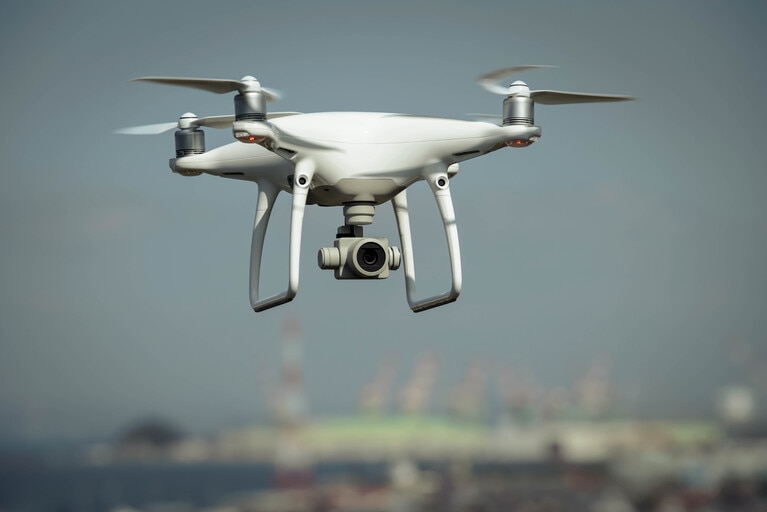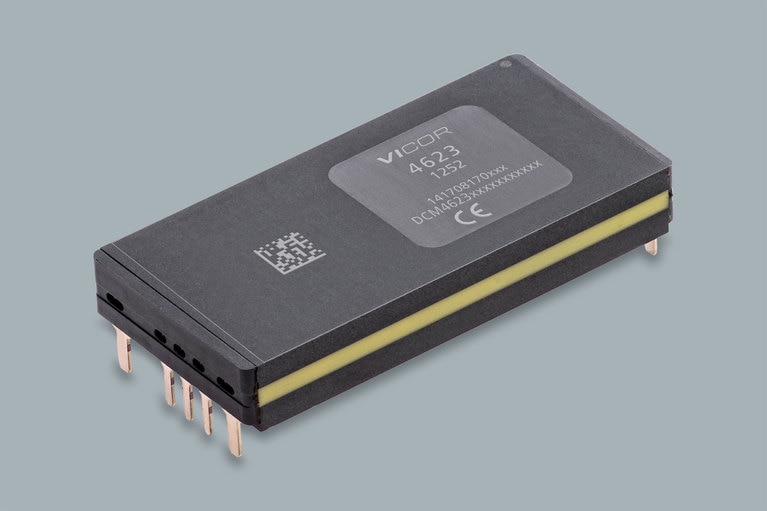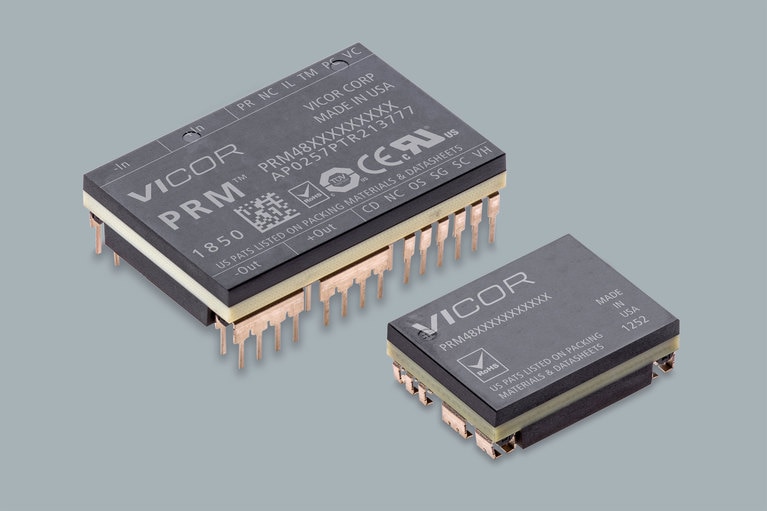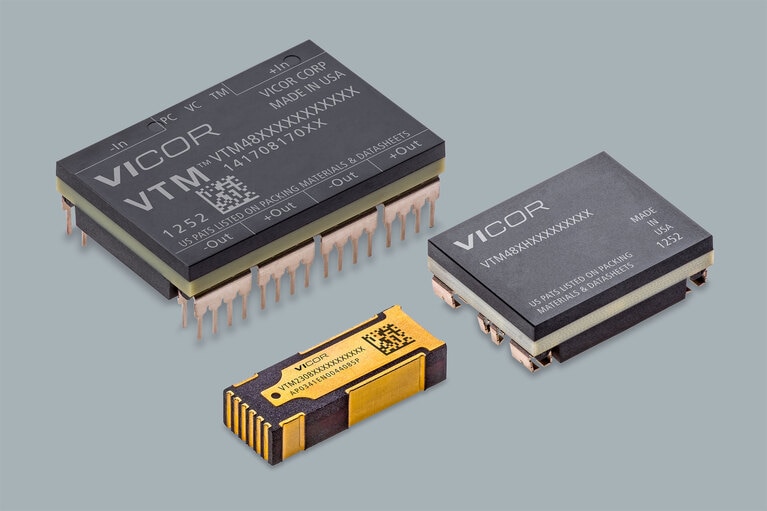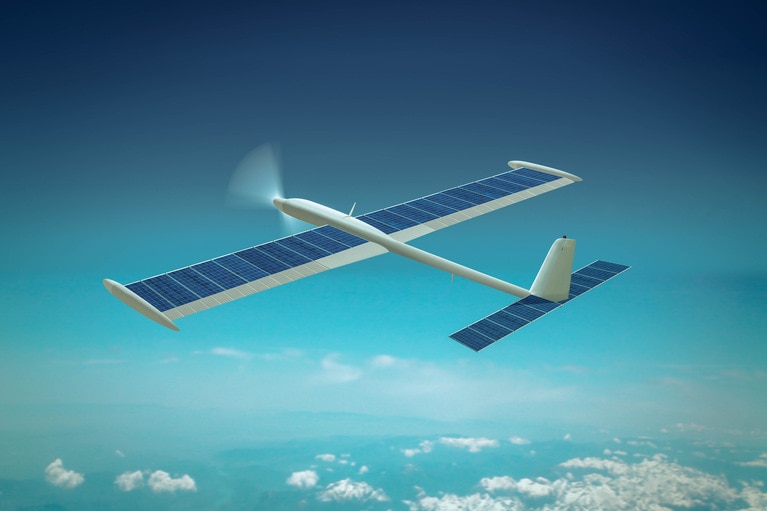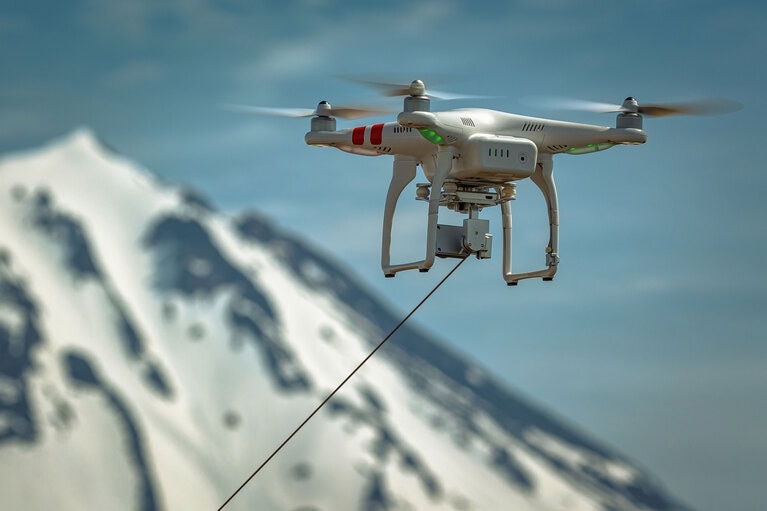
High-density, high-power modules enable lighter, safer, lower cost tether cables to extend missions
This class of unmanned vehicle is powered and controlled via a tether from a ground-based power source assisting in extended missions
Q & A with David Berry,
Vicor Principal Applications Engineer
Today’s Unmanned Aerial Vehicles (UAVs) are playing a greater role in our daily lives. From package delivery to aerial surveillance, UAVs are being deployed in greater numbers with greater responsibilities globally. As a result, UAV technology is evolving rapidly to meet the growing demand for more features and enhanced capabilities. This includes additional sensors, cameras and communication devices which all require power. Traditional UAV power systems lack the power density and efficiency to meet the needs of this new class of UAV. We sat down with Vicor FAE Dave Berry to understand how optimized power delivery networks (PDN), based on modular power products, help to improve efficiency, reliability and reduce weight and size, enabling extended range and flight times while freeing up space for larger payloads and functionality.
The key challenge we see facing engineers today is the demand for smaller, lighter-weight designs that deliver higher power. Increasingly, UAVs are carrying larger payloads, increasing flight times and handling more advanced communications and sensing. These evolving requirements place greater demands on power solutions to be smaller, lighter and quieter. Compact modules free up space for payloads such as enhanced and complex electronics including sensors, cameras, tools with communications and control. Lightweight modules enable increased flight time. And integrated modules using low-noise topologies reduce EMI that would otherwise impact remote operation, sensor accuracy, image quality and rapid data transmission. Vicor solves these challenges through next-generation power modules that deliver higher density and higher efficiency than other DC-DC converters.
Figure 1: Increasingly, UAVs are carrying larger payloads, increasing flight times, and handling more advanced communications and sensing. These evolving requirements place greater demands on power solutions to be smaller, lighter, and quieter.
We currently have a variety of products that address the demands of UAV applications with either low-voltage or high-voltage DC input modules. The DCM™ DC-DC Converter Module product family offers significant improvement over competitive DC-DC converter solutions. In addition, further power density can be achieved with the PRM™ Regulator, a high-performance buck-boost regulator. The PRM creates an intermediate bus of 24 – 48V with 96 – 98% efficiency to power servos and additional downstream power modules, including the fixed-ratio NBM™ Non-Isolated Bus Converter Module, ZVS Buck and ZVS Buck-Boost Regulators. These modules can also be paralleled for higher-power conversion.
Typically each product has specific attributes and the design goal of the engineer will dictate which product(s) provide the overwhelming advantage. Because our products are compact and designed with thermally-adept packaging, most are ideally suited for many UAV applications, including surveillance, communications, search-and-rescue and payload delivery. Some of these applications are tethered or employ wiring harnesses for power delivery.
Vicor has products with very high input voltages (BCM®) for tethered applications. Other applications are powered by batteries (DCM™), making power conversion efficiency — along with size/weight — critical. A power module design approach easily addresses challenges presented by load capacity, placement and user functionality requirements. To support easy power design development, Vicor offers an online tool, the Power System Designer, to aid in selecting the appropriate product(s) to optimize your power delivery network.

Figure 2: To optimize the payload runtime and overall system performance it is best to run high voltage over a thinner tether to the top then convert down to the loads. The Vicor fixed ratio converter, BCM, Bus Converter Module, transforms voltage down to the appropriate bus voltage in the UAV.
Yes, we offer valuable tools online for simulations and assistance using thermal management and component calculators. In addition, we are offer demo boards and our applications engineers are available to assist with design reviews.
Figure 3: The PRM/VTM Adaptive Loop Calculator, shown above, is one of several design calculators available online at www.vicorpower.com/Vicor-tools/calculators. Each calculator features and easy-to-use graphical user interface helping to enhance the user experience.
Standard product samples can be ordered from Digi-Key, Mouser and Arrow, plus solutions for UAV systems can be discussed thoroughly with our Applications Engineering team www.vicorpower.com/contact-us.
It would be difficult to achieve the power density and efficiency of Vicor modules without our intellectual property. We achieve high power density, efficiency and thermal management through proprietary topologies and packaging. Additionally, we achieve high quality and reliability through disciplined, automated manufacturing that also utilizes proprietary capabilities.
Read more on how Vicor powers UAVs for Greater UAV flight time, range and payload.
Patrick Wadden joined Vicor in October 2018 as Global Vice President of Automotive Business Development to lead the company’s business in the Automotive Industry while becoming a key partner to companies developing mild hybrid, EV/HEV and autonomous vehicles.
David Berry, Principal Applications Engineer
UAV solutions: Increasing payload capability and flight times of commercial UAVs
White paper: DCM for tethered UAV applications
High-density, high-power modules enable lighter, safer, lower cost tether cables to extend missions
This class of unmanned vehicle is powered and controlled via a tether from a ground-based power source assisting in extended missions
High-efficiency, high-density modules free up space for advanced communications and extend range
High-efficiency class of UAV depend on solar power to meet its long flight time requirements
DCM DC-DC converters double the internal bus power and help keep the aircraft as light as possible
High-altitude long-endurance (HALE) UAVs are essentially flying satellites, designed to operate at extremely high altitudes for extended periods
Extend flight times and support high-performance surveillance equipment to ensure safety and security
Effective surveillance requires uninterrupted sensing and communication to ensure the safety and security of valued property, equipment, and assets
